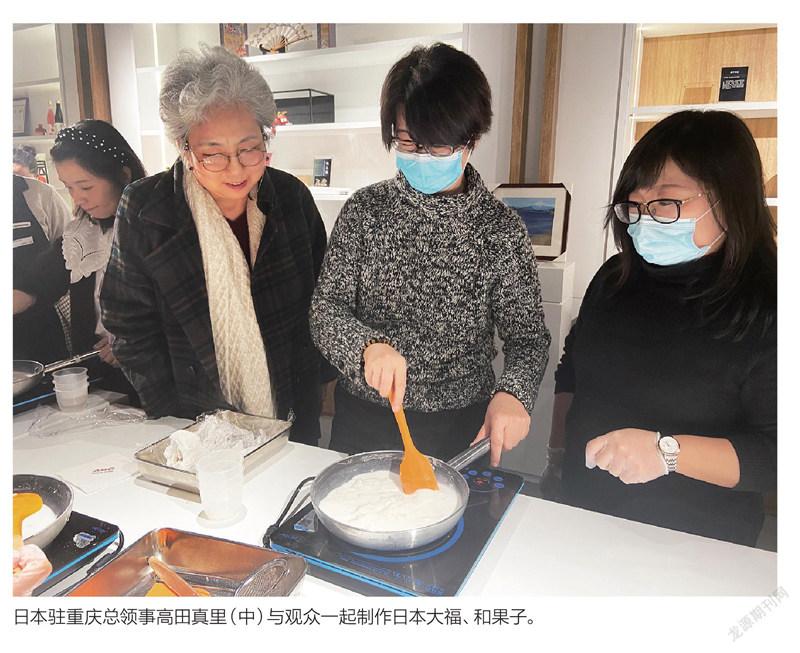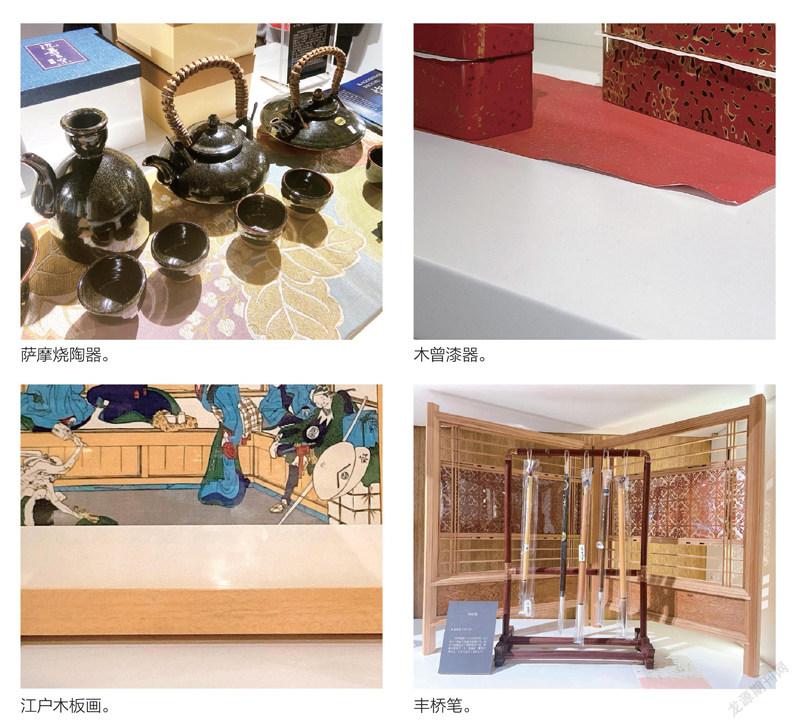日本“女儿节”白象街上漫风情
2022-03-23刘丁睿
刘丁睿



On the third day of March, girls’ rosy cheeks beam with smiles sipping peach blossom wine. March 3rd is Hinamatsuri (Japanese Doll’s Day). What is the origin of this day? What are the folk cultures behind it? This year, on the eve of Hinamatsuri, Japanese Consulate-General in Chongqing joined hands with the Association for the Promotion of Traditional Craft Industries (DENSAN), to hold a special event on Japanese Hinaningyo (Dolls). The event will be held at AOYAMA SQUARE on Baixiang Road in Yuzhong District, exuding the unique charm of Japanese traditional festival to the people in Chongqing.
Hinamatsuri is one of the five traditional folk festivals in Japan. It has another name called Peach Blossom Day as it takes place when peach flowers are in full bloom in Japan. At the time of the year, families with daughters will place appealing and exquisitely made palace dolls in gorgeous shape in their living room, so as to bless healthy growing up, peace and happiness to their daughters.
Takada Mari, Japanese Consul-General in Chongqing said, “The meaning of gentleness is embedded in the festival. I am glad to spend this day with friends in Chongqing. And I also would like to take this opportunity to let you further understand Japanese traditional culture, and to narrow the distance between us through cultural exchanges.”
At AOYAMA SQUARE, our reporter saw a wide variety of traditional Japanese handicrafts such as Edo woodcut prints, Wasaka lacquerware, Satsuma pottery, and Toyohashi pen. Among them, the most eye-catching one is a set of doll kit for display only.
It is introduced that the kit consists of 15 exquisitely made dolls that are placed in orders from top to bottom. In front of a golden screen on the top order, there are two gorgeously dressed dolls, and they are the emperor in Japanese court dress with belted crown, and the empress in twelve layers of clothes. Then, three palace maids stand on the second order, each in postures of holding the wine, holding the wine glass and holding the pot. You can see five musicians who are playing the music on the third, and two attendants on the fourth order, namely right minister and left minister. Next, on the fifth order stand three footmen with different cleaning tools. Lastly, on the sixth and seventh order, some dowry furniture and sedan chairs brought by the empress from her natal family are displayed, while the multi-layered box in the middle implies the elders’ hope for their daughters to always have abundant food.
What is worth mentioning is the fabrics of the clothes. Most fabrics used for the dolls are fabrics for making Kimono (traditional Japanese clothes). For example, Japanese high-end fabrics such as Nishijin-ori, Saga Nishiki and other fabrics are used, and there is even a long-established craft workshop to make the dolls. The fabric of Kimono worn by the doll emperor and empress on the first order is exactly the same as that of the real Japanese emperor and empress in the history. A small doll not only embodies the spirit of Japanese craftsmanship, but also displays the unique charm of Japanese culture.
During Hinamatsuri, in addition to placing doll altars in Japanese families, mothers will also prepare delicious dishes such as Temari sushi and clam soup to entertain the relatives and friends who come to celebrate the festival. At AOYAMA SQUARE, there are also special tasting sessions of “Amazake” (Japanese sweet rice wine), and experience classes of making Japanese confectionery, such as Japanese Wagashi and Daifuku. Under the professional guidance of the teacher, everyone carefully observes and attentively makes the confectionery through processes including kneading, pressing and shaping, thus experiencing a strong Japanese style.
三月三,細饮桃花酒,笑凝桃脸开。每年3月3日是日本“女儿节”,这个节日有何来历?又有哪些民俗文化?今年“女儿节”前夕,日本驻重庆总领事馆和一般财团法人传统工艺品产业振兴协会,在重庆渝中区白象街青山SQUARE举办日本雏人形特别活动,向重庆市民展现这个日本传统节日的独特风情。
“女儿节”是日本民间五大节日之一,因该时节正是日本满山桃花盛开之时,亦称“桃花节”。每逢此时,有女儿的家庭都会在厅前摆出做工精湛、造型华美的宫装人偶,以此来祝福女孩健康成长、平安幸福。
日本驻重庆总领事高田真里表示,这个节日包含着温柔的意义,很高兴与重庆的朋友共度此节,也希望借此机会,让大家进一步了解日本传统文化,用文化拉进彼此距离。
在青山SQUARE,记者看到琳琅满目的日本传统工艺品,“江户木板画”“若狭漆器”“萨摩烧陶器”“丰桥笔”……其中,最瞩目的当属一套仅供展示的雏人形套件。
据介绍,该套件由15个精致人偶组成,从上至下,最上阶金色屏风前,展示的是两尊着装华丽的人偶,分别是穿着束带衣冠的天皇和穿着十二单衣的皇后;第二阶是三名宫女,分别为手执酒、酒杯及酒壶。第三阶是演奏音乐的五人乐官;第四阶是两名随从,即右大臣和左大臣;第五阶则是三名听差,带着不同的打扫工具。第六阶和第七阶会摆放些皇后从娘家带来的嫁妆家具和坐轿等,中间的多层套盒寓意着长辈希望女儿永远饮食充裕。
值得一提的是,这套人偶的着装也大有来头。据了解,其绝大部分面料均采用和服面料。比如日本高级布料“西阵织”“佐贺锦”等,甚至还有历史悠久的雏人形工艺坊,给第一阶天皇皇后人偶穿的和服与当年真正的天皇皇后穿着的和服面料是一模一样。一个小小人偶,不仅凝聚着日本匠人精神,更是展示了日本文化的独特魅力。
“女儿节”期间,日本家庭除了摆放人偶祭坛,母亲还将准备手鞠寿司、蛤蜊汤等美味佳肴,用来款待前来贺节的亲朋好友。在青山SQUARE,还特别推出了“甘酒”(日本甜米酒)试饮,日本和果子、大福等日式点心制作体验课堂。在老师的专业指导下,大家认真观摩、用心制作,揉搓、按压、塑形,体验着浓浓日式风情。
延伸阅读
重庆青山SQUARE日本传统工艺品中国直营店,位于渝中区白象街259号。致力于展示和传播日本传统工艺文化,店内囊括了100多种日本传统工艺品,包括漆器、烧陶、和纸、锡器、金泽箔、木制品等种类。
